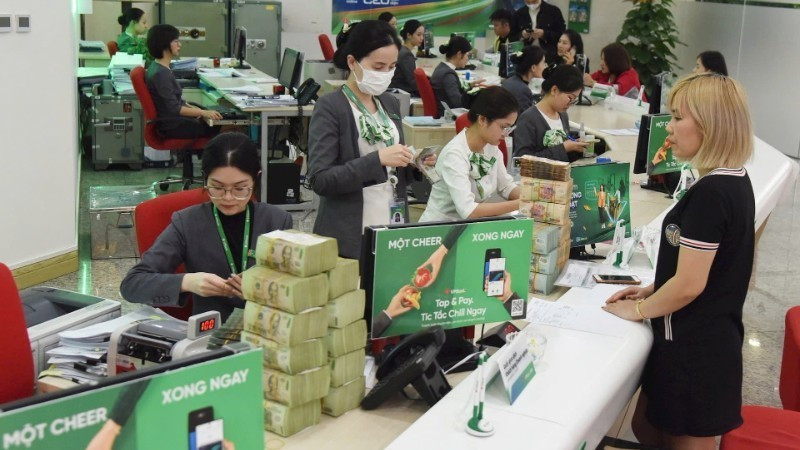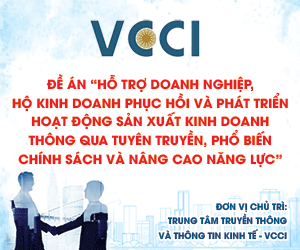Viet Nam’s banking sector strengthens capital safety and market confidence
In the second half of 2025, Viet Nam’s financial and monetary landscape has shown numerous positive signs. Deposits from households have reached record levels, credit growth remains strong, and commercial banks are stepping up bond issuance to supplement their medium- and long-term capital sources.

These movements not only demonstrate the attractiveness and credibility of the banking system but also reflect the sector’s determination to ensure capital safety, maintain macroeconomic stability, and support overall growth.
Strong inflows of deposits
According to the latest data from the State Bank of Viet Nam (SBV), as of June, the total means of payment exceeded 19.58 quadrillion VND (approximately 743 billion USD), up 9.32% compared with the end of 2024.
Notably, total customer deposits at credit institutions surpassed 15.7 quadrillion VND (approximately 596 billion USD), with household deposits exceeding 7.69 quadrillion VND (approximately 292 billion USD) — an increase of nearly 9%, marking the highest level ever recorded.
As of June, the total means of payment exceeded 19.58 quadrillion VND (approximately 743 billion USD), up 9.32% compared with the end of 2024. Notably, total customer deposits at credit institutions surpassed 15.7 quadrillion VND (approximately 596 billion USD), with household deposits exceeding 7.69 quadrillion VND (approximately 292 billion USD) — an increase of nearly 9%, marking the highest level ever recorded.
(According to the State Bank of Viet Nam)
Although deposit interest rates remain low, especially for short terms, capital from households continues to flow into the banking system. This reflects the strong confidence depositors have in the safety and stability of the financial and monetary system.
Meanwhile, deposits from economic organisations have also grown positively, reaching more than 8.1 quadrillion VND (approximately 307 billion USD), up 5.7% from the end of 2024. In June alone, these organisations placed 363 trillion VND (approximately 17.3 billion USD) into the banking system.
This is a notable improvement, as deposits from economic entities had previously recorded negative growth for four consecutive months, rising only slightly by 0.97% by the end of May.
This capital flow not only helps enterprises make better use of idle funds but also enhances the liquidity of credit institutions, ensuring a more balanced funding structure.
While mobilisation remains positive, credit has also accelerated sharply. By the end of August, total outstanding credit across the economy reached 17.46 quadrillion VND (approximately 663 billion USD), up 11.82% compared with the end of 2024.
This pace is significantly higher than in recent years, showing strong capital demand within the economy. However, it also poses challenges for the banking system: as credit grows faster than mobilisation, the pressure to balance funding increases, particularly concerning the maturity mismatch between short-term deposits and long-term loans.
Balancing capital sources
According to the Viet Nam Bond Market Association (VBMA), in August alone, total corporate bond issuance reached about 46 trillion VND (approximately 1.7 billion USD), up more than 50% from the previous month.
Over the first eight months of 2025, total issuance neared 360 trillion VND (approximately 13.6 billion USD), a sharp increase compared with the same period in 2024. Banks accounted for 73% of total cumulative issuance since the beginning of the year.
Many banks have conducted successive private placements with average interest rates ranging from 5.4–6.5% per annum, lower than a year earlier, and typical maturities of 2–3 years.
Notably, some banks have issued long-term bonds with maturities of 7–10 years to improve their capital adequacy ratio (CAR).
In addition to new issuances, banks have proactively repurchased bonds before maturity to restructure debt, reduce repayment pressure, and strengthen their credibility in the market.
Economists note that boosting bond issuance helps banks secure long-term capital in a context of rapid credit growth. However, the most crucial factor lies in how effectively these funds are utilised.
Dr Le Duy Binh, Managing Director of Economica Viet Nam, recommends that banks ensure capital raised from bonds is allocated to loans with sustainable profitability while developing robust liquidity management strategies to prevent cash flow imbalances. This means that beyond expanding capital size, banks must also enhance their credit appraisal and risk management capabilities.
Another key factor in attracting investors is transparency — banks need to disclose information clearly and strengthen their reputation in the bond market.
A positive trend is that many banks are moving toward issuing green and sustainable bonds, appealing to long-term investors committed to ESG standards while aligning with the nation’s sustainable development goals.
Recently, Viet Nam Prosperity Joint Stock Commercial Bank (VPBank) became the first Vietnamese bank to successfully issue 300 million USD worth of sustainable bonds in the international market. The five-year bonds were issued through a private placement, comprising 1,500 bonds with a face value of 200,000 USD each.
“This issuance marks an important milestone in VPBank’s sustainable development journey and demonstrates that Viet Nam can effectively connect with global green capital flows. The 300 million USD will be allocated to major green and social projects, contributing to the Government’s Net Zero commitment and building a prosperous, sustainable Viet Nam,” affirmed Nguyen Duc Vinh, CEO of VPBank.
In light of rapid credit and deposit growth, Deputy Prime Minister Ho Duc Phoc recently emphasised during a meeting with the State Bank of Viet Nam the need for a scientific, rational, and flexible monetary policy, focusing on maintaining balance between deposits and credit.
The Government has also directed the SBV to closely monitor market developments, stabilise lending rates, channel credit toward priority sectors, strictly control real estate lending flows, and intensify inspections to prevent cross-ownership and the misuse of short-term funds for long-term loans beyond regulatory limits.








